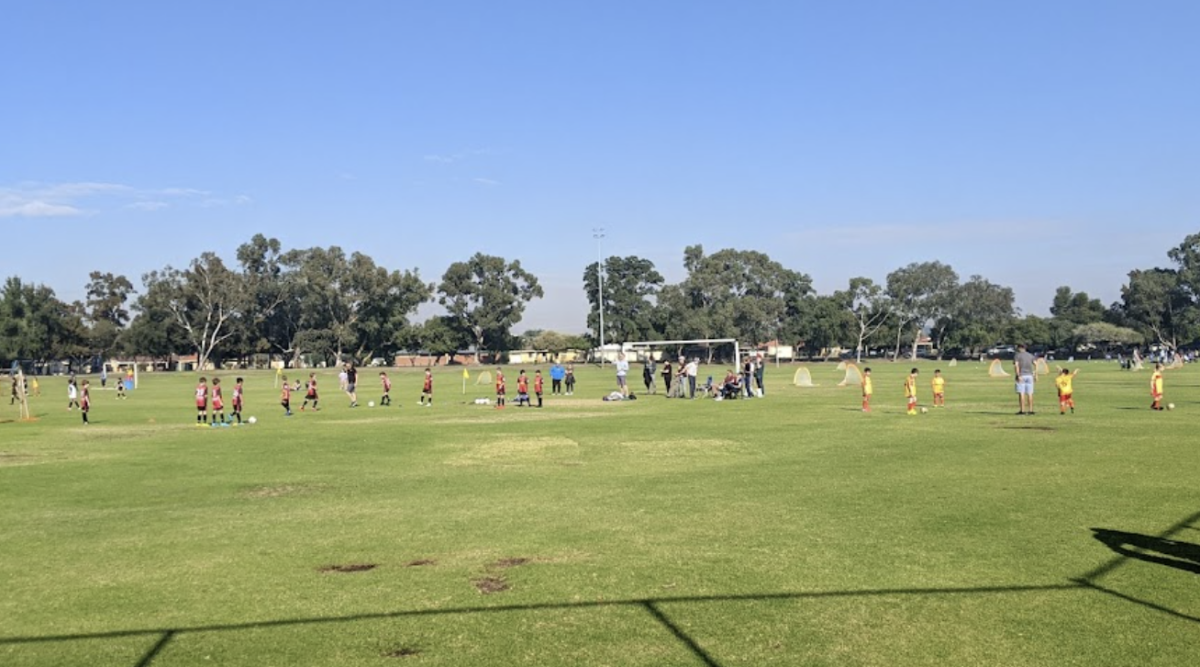
When you think about Perth's biggest challenges, traffic jams and summer heat probably spring to mind. But there's another crisis quietly unfolding in our suburbs—and it's literally about keeping our cool.
The City of Canning has just cranked up the heat on tree vandals, quadrupling fines from $250 to $1,000 for anyone caught damaging or removing trees on council land.
While this might seem like typical council heavy-handedness, the reality is far more serious: Perth has only 16 per cent tree canopy coverage and is ranked as Australia's most barren major city, with just 22 per cent of the population living in suburbs with more than 20 per cent tree cover.
To put that in perspective, Melbourne has 30 per cent of residents in well-canopied areas, Sydney has 44 per cent, and Brisbane boasts an impressive 79 per cent. When you're dealing with the hottest summers in the country and yet still have no state-wide tree canopy target, every single tree matters.
The great suburban tree massacre
Canning's tough new stance comes after what Mayor Patrick Hall describes as 'mass destruction' of public trees. The most startling example? Thirty to forty nut trees planted specifically to feed local cockatoos were destroyed in Canning Vale—a program that took years to establish, wiped out in acts of senseless vandalism.
'We've had extensive tree damage, major vandalism events at Nurdi Park in Riverton, Shelley foreshore, Adenia Park'
But here's the kicker: despite having tree protection laws since 2021, no one has actually been fined yet. Council staff say prosecutions have been 'tricky' - perhaps because a $250 fine felt more like a parking ticket than a serious deterrent.
Even the new $1,000 penalty has some councillors scratching their heads. 'I think $1,000 actually is still a little bit low,' admits Councillor Joanne Page, noting that it can cost property owners thousands to go through proper tree retention processes. The Local Government Amendment Act 2024 now allows councils to seek convictions up to $10,000—and some are calling for the full amount.
The cooling truth about urban trees
For Perth's growing population of seniors, this tree debate isn't academic. Urban forest advocates say achieving 30 per cent tree canopy cover could lower Perth temperatures by up to 10°C—a potentially life-saving difference during our scorching summers.
Why Perth's tree crisis hits seniors hardest
Research shows urban tree canopy can lower city temperatures by up to 10°C. For older Australians who may be more vulnerable to heat stress, adequate tree cover isn't just about aesthetics—it's about health and quality of life.
The science is clear: when large trees are removed and replaced with hard surfaces, these areas absorb and store heat during the day, then release it at night, creating the 'urban heat island effect' that exposes residents to much higher temperatures for longer periods each day.
This urban heat island effect has a major impact on the liveability of cities and levels of community health and wellbeing—and the easiest way to address it is to protect and plant more trees.
Did you know?
Did you know?
Canning has one of Perth's lowest tree canopies at less than 8 per cent, but they're not alone. Some Perth suburbs have 60 per cent of available space dedicated to carparks and roads, with as little as 10 per cent tree canopy remaining.
The carrot approach: cash for keeping trees
Thankfully, Canning isn't just wielding the stick—they're dangling some pretty sweet carrots too. Under their groundbreaking tree preservation scheme, property owners can earn $200 per year for each registered large, native tree on their land—and that payment continues 'forever,' according to Mayor Hall.
The maths is compelling: a property with six qualifying trees would pocket $1,200 annually. For retirees on fixed incomes, that's a handy boost that also helps the environment. The trees must meet strict criteria—they need to be significant, native, and very large—but for those who qualify, it's money in the bank for doing absolutely nothing.
State sweeteners make it even better
The good news extends beyond Canning's boundaries. All Western Australians over 18 can now apply for cash rebates of up to $150 simply for planting native trees in their gardens through two state programs.
The 'Treebate Program' is a $6.9 million initiative open to all WA residents, while the Tree Recovery Program specifically helps those who've lost trees to the destructive polyphagous shot-hole borer—a pest that's already claimed over 4,500 Perth trees.
Financial incentives for Perth tree preservation
- Canning residents: $200/year per registered native tree (ongoing)
- All WA residents: Up to $150 rebate for planting native trees
- Tree Recovery Program: Additional support for pest damage replacement
- Potential annual income: $1,200+ for properties with multiple large trees
The bigger picture: Perth's green awakening
Perth councils are racing to achieve 30 per cent tree canopy coverage within the next decade, a target that the WA Tree Canopy Alliance says is urgently needed by 2040. Canning alone plans to plant more than 60,000 new trees over the next 20 years—an ambitious goal that requires both community buy-in and serious protection of existing trees.
The challenge is enormous. Research shows 85 per cent of Perth's tree canopy is on private land, making protection crucial, while some suburbs have lost so many trees they're left with just 10 per cent canopy cover.
But there are signs of hope. Sydney's tree canopy increased from 21 per cent to 21.7 per cent between 2019 and 2022, with the biggest gains in areas that received targeted government investment in urban greening programs.
What this means for your neighbourhood
Whether you're in Canning or elsewhere in Perth, this tree protection trend is likely coming to your area soon. The WA Local Government Association has established an Urban Forest Working Group with 34 councils actively developing tree protection strategies.
The message is clear: if you're thinking about removing a tree, check with your council first. The days of 'ask forgiveness rather than permission' are numbered, and the financial penalties are becoming serious enough to make anyone think twice.
For those with mature trees, these changing rules could represent a genuine financial opportunity. The combination of state rebates for new plantings and ongoing payments for tree preservation in some areas means your garden could become a steady income stream while helping combat Perth's heat island effect.
What This Means For You
The bottom line? Perth's tree wars are really about creating liveable communities for the future. As our climate heats up and our population ages, every tree we can save or plant makes our neighbourhoods cooler, healthier, and more valuable.
What are your thoughts on Perth's tree protection efforts? Have you noticed changes in your local area's green spaces? Share your experiences in the comments below—we'd love to hear how the urban forest is looking in your neck of the woods.
Original Article
https://au.news.yahoo.com/aussie-co...crackdown-on-destructive-issue-042359870.html
Urban Greening | City of Perth
Cited text: A key goal is to increase the level of canopy cover across the public realm to 30 percent within 30 years.
Excerpt: quadrupling fines from $250 to $1,000 for anyone caught damaging or removing trees on council land
https://perth.wa.gov.au/community/sustainability-hub/urban-greening
30 per cent Tree Canopy Target by 2040 for Perth—WATCA
Cited text: In 2020 Perth had only 16 per cent tree canopy coverage—and it's still in decline. In 2021, Nearmaps ranked Perth as the most barren major city in Australia...
Excerpt: Perth has only 16 per cent tree canopy coverage and is ranked as Australia's most barren major city, with just 22 per cent of the population living in suburbs with more than 20 per cent tree cover
https://watca.org.au/pages/perth-tree-canopy-target
30 per cent Tree Canopy Target by 2040 for Perth—WATCA
Cited text: In 2021, Nearmaps ranked Perth as the most barren major city in Australia, with just 22 per cent of the population living in suburbs with more than 20 per cent tree c...
Excerpt: Melbourne has 30 per cent of residents in well-canopied areas, Sydney has 44 per cent, and Brisbane boasts an impressive 79 per cent
https://watca.org.au/pages/perth-tree-canopy-target
30 per cent Tree Canopy Target by 2040 for Perth—WATCA
Cited text: Perth has the hottest summers in the country and yet we still have no Tree Canopy Target and continue to be the only state without basic protections f...
Excerpt: the hottest summers in the country and yet still have no state-wide tree canopy target
https://watca.org.au/pages/perth-tree-canopy-target
30 per cent Tree Canopy Target by 2040 for Perth—WATCA
Cited text: If we can achieve 30 per cent Tree Canopy Cover in Perth by 2040 we can lower temperatures in our city by up to 10°C—and that’s just one of the amazing bene...
Excerpt: Urban forest advocates say achieving 30 per cent tree canopy cover could lower Perth temperatures by up to 10°C
https://watca.org.au/pages/perth-tree-canopy-target
30 per cent Tree Canopy Target by 2040 for Perth—WATCA
Cited text: These trees are often replaced with hard surfaces, which are usually highly effective at absorbing and storing heat during the day. This heat is relea...
Excerpt: when large trees are removed and replaced with hard surfaces, these areas absorb and store heat during the day, then release it at night, creating the 'urban heat island effect' that exposes residents to much higher temperatures for longer…
https://watca.org.au/pages/perth-tree-canopy-target
30 per cent Tree Canopy Target by 2040 for Perth—WATCA
Cited text: The urban heat island effect has a major impact on the liveablity of our cities and levels of community health and wellbeing. And the easiest way to a...
Excerpt: urban heat island effect has a major impact on the liveability of cities and levels of community health and wellbeing—and the easiest way to address it is to protect and plant more trees
https://watca.org.au/pages/perth-tree-canopy-target
30 per cent Tree Canopy Target by 2040 for Perth—WATCA
Cited text: WATCA is calling on the WA government to urgently address Perth’s shrinking urban tree canopy by committing to a 30 per cent Tree Canopy Target by 2040.
Excerpt: the WA Tree Canopy Alliance says is urgently needed by 2040
https://watca.org.au/pages/perth-tree-canopy-target
30 per cent Tree Canopy Target by 2040 for Perth—WATCA
Cited text: Of particular concern was the decline of larger trees on private land, which make up 85 per cent of the Perth’s tree canopy.
Excerpt: Research shows 85 per cent of Perth's tree canopy is on private land, making protection crucial, while some suburbs have lost so many trees they're left with just 10 per cent canopy cover
https://watca.org.au/pages/perth-tree-canopy-target
30 per cent Tree Canopy Target by 2040 for Perth—WATCA
Cited text: You don’t have to be a scientist to realise this just isn’t sustainable for our city (or the planet).
Excerpt: Research shows 85 per cent of Perth's tree canopy is on private land, making protection crucial, while some suburbs have lost so many trees they're left with just 10 per cent canopy cover
https://watca.org.au/pages/perth-tree-canopy-target
Urban heat and canopy data | Planning
Cited text: This latest update shows Greater Sydney’s tree canopy has increased from 21 per cent in 2019 to 21.7 per cent in 2022, with the most gains in Central and Western Sydn...
Excerpt: Sydney's tree canopy increased from 21 per cent to 21.7 per cent between 2019 and 2022, with the biggest gains in areas that received targeted government investment in urban greening programs
https://www.planning.nsw.gov.au/policy-and-legislation/urban-greening/tree-canopy-data
Urban Forest | WALGA
Cited text: In early 2019 WALGA established the Local Government Urban Forest Working Group and is currently represented by 34 Local Governments from across the s...
Excerpt: The WA Local Government Association has established an Urban Forest Working Group with 34 councils actively developing tree protection strategies
https://walga.asn.au/policy-and-advocacy/our-policy-areas/environment/urban-forest







